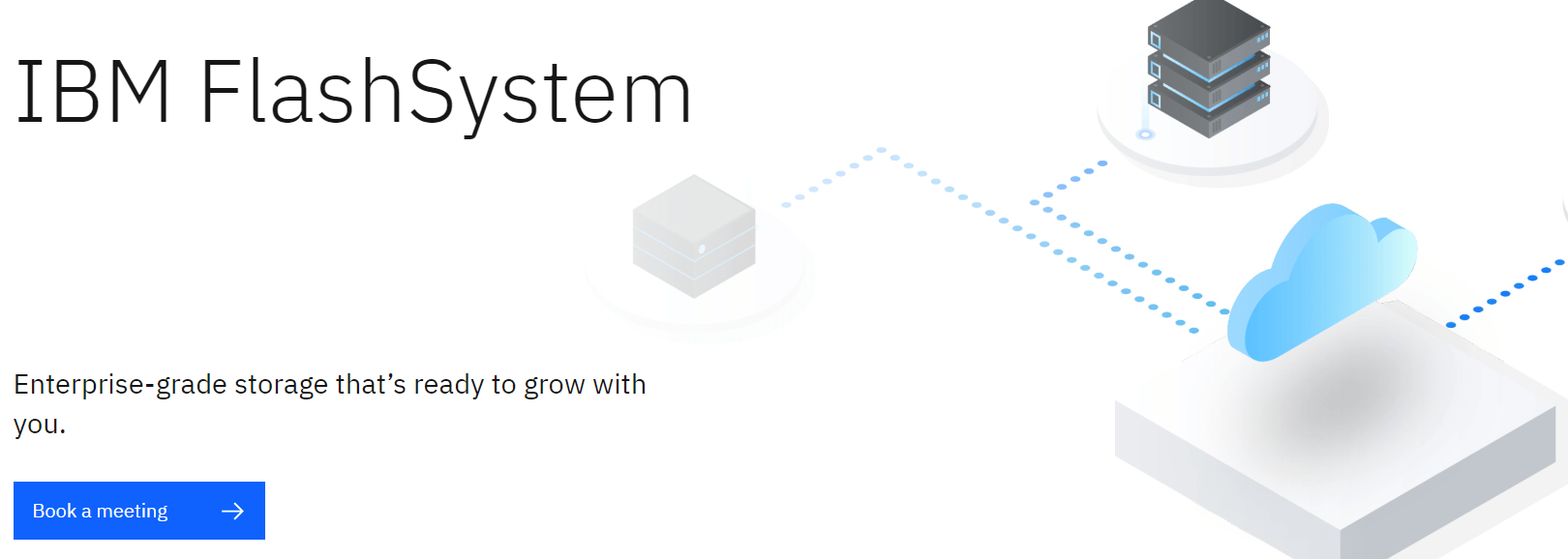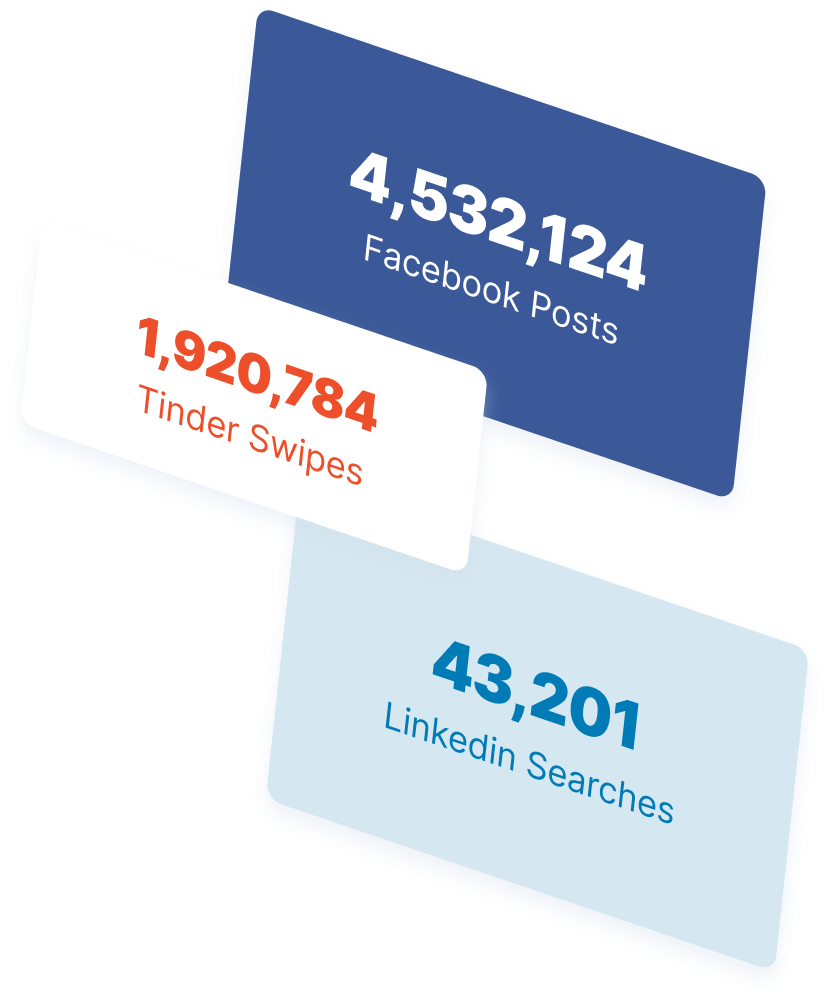-
 Published: Jun 21, 2023
Published: Jun 21, 2023
-
 14 min. read
14 min. read
-
 Sina Mchunu
Sina Mchunu Research & Tech Content Writer
Research & Tech Content Writer
- Sina is a marketing expert who specializes in SEO, AI, and digital marketing content. With over five years of experience, she’s written hundreds of pieces, spanning a variety of topics and industry niches. She loves combining her strong eye for detail and passion for storytelling in her work. You’ll find her fruit picking or horse riding at the local farm when she’s not writing.
What is big data?
Big data is a vast collection of information that helps businesses make smarter decisions, improve efficiency, and gain valuable insights.
Big data describe the enormous amount of organized and unstructured data produced by people, businesses, and machines. It contains all kinds of information, such as social media posts, online purchases, sensor readings, and medical records.
The proliferation of Internet use, mobile technology, and the Internet of Things (IoT) significantly contribute to this exponential data growth. This access creates both possibilities and challenges for businesses and governments.
How?
We’ll explain the big data notion in this post, along with how it functions and how you can utilize it to advance your company or organization and stay competitive.
Let’s start with:
- What is big data?
- How big data works
- Types of big data
- Characteristics of big data
- Use cases for big data
Let’s dive in!
Don’t miss our Marketing Manager Insider emails!
Join 200K smart marketers for the hottest marketing news and insights in your inbox.
Inline Subscription Form
“*” indicates required fields


What is big data?
Big data refers to extensive quantities of organized and unorganized datasets that are too complex to process with conventional data processing techniques. It’s extremely large, with sizes ranging from terabytes to petabytes and beyond, making it difficult to store, manage, and analyze using standard data management methods.
How big data works
Organizations gather and analyze big data sets as part of the extensive data process to identify patterns, trends, and insights. Data mining, machine learning, and artificial intelligence (AI) are some contemporary methods for extracting information from this data. Following data collection and analysis, you can use it to enhance operations, make informed decisions, and develop new goods and services.
Big data has many uses in sectors, including marketing, finance, and health care. Nonetheless, it’s essential to ensure that data is collected, stored, and processed ethically and responsibly, considering the daily volume. Your business must implement appropriate data governance rules and processes to safeguard the security and privacy of personal information.
In addition, big data can spur innovation by revealing new product or service development possibilities. It has undoubtedly become more crucial in determining how business and society develop in the future as the amount of data keeps expanding dramatically.
Our digital marketing campaigns impact the metrics that improve your bottom line.
See Our Approach
$10 billion

24 million

7.14 million
Types of big data
Every day, the world produces vast amounts of data, forcing big data to be classified into various types. Based on their sources, formats, and traits, these categories of big data consist of:
Comprehending these types is essential to manage and analyze big data effectively. Let’s look more closely!
1. Structured data
Structured data refers to data that has been meticulously organized in a predetermined system. It is very well-structured and searchable, which facilitates analysis and comprehension.
Examples of structured data include:
- Customer information
- Financial data
- Inventory records.
Structured data has the benefit of being simple to process and evaluate with conventional data analysis tools. Nevertheless, structured data might be limited in its insights because it is constrained to particular pre-defined areas and categories.
2. Unstructured data
Unstructured data relates to frequently disorganized data without a preset framework, making it challenging to understand and evaluate. Unstructured data can take many different formats, including:
- text
- images
- audio
- video
You can compile this data from various sources, including online profiles, inboxes, and conversation histories.
Unstructured data, despite its unorganized character, provides insightful information that can assist organizations in making choices. Examples include sentiment analysis and spotting developing trends.
However, extracting these insights requires advanced tools like machine learning and natural language processing.
3. Semi-structured data
Semi-structured data is not entirely structured or completely unstructured. It has some structure or organization but not enough to be included in a conventional database or spreadsheet.
Although the content is still unstructured, semi-structured data frequently includes metadata or tags that offer some degree of order.
Examples of semi-structured data include:
- XML files
- JSON files
- log files
Semi-structured data is more manageable than unstructured data but requires specialized tools and methods to extract valuable insights. It has the benefit of being simple to query and analyze using computer languages like Python or R.
Semi-structured data is also often utilized in big data applications, where it may be processed and examined in real-time to offer insightful information.
Measuring the metrics that affect your bottom line.
Are you interested in custom reporting that is specific to your unique business needs? Powered by RevenueCloudFX, WebFX creates custom reports based on the metrics that matter most to your company.
- Leads
- Transactions
- Calls
- Revenue

Characteristics of big data
Big data’s properties provide a more thorough insight into client behavior, market trends, and operational effectiveness. Your business can extract essential insights from extensive data using sophisticated analytics tools and methodologies, which can guide strategic planning and enhance overall performance.
The properties make it a significant resource for businesses and organizations seeking to gather insights and make knowledgeable decisions.
Here are the primary characteristics of big data:
1. Volume
Volume is the substantial data quantity generated daily from several sources, including social media, sensors, and mobile devices. This data is frequently unstructured, necessitating specialized technologies to extract significant insights.
Big data analytics enables your company to spot patterns, trends, and outliers that previously obscured the volume of data. Thus boosting operations effectiveness, customer satisfaction, and the quality of decision-making.
2. Velocity
Velocity relates to the pace of data generation, collection, and analysis. Now more than ever, organizations need to be able to process the enormous amounts of data produced quickly because of how fast everything moves in the modern world.
Velocity data solutions allow your business to manage data in real-time, enabling your staff to react quickly to shifting market circumstances and customer demands. This method lets you stay one step ahead of your rivals and remain dominant in your industry.
3. Variety
Variety refers to the diversity of data types businesses must manage and evaluate. Organizations face an ever-complex data landscape due to the growth of new technologies and channels for data collection.
Big data variety solutions enable your business to combine and analyze various data sources — including structured and unstructured data — to get a fuller picture of your operations and customers.
This all-encompassing perspective can support you in identifying fresh opportunities for development and innovation while reducing potential risks.
4. Veracity
Veracity describes the accuracy and dependability of the data under analysis. Data that is either inaccurate or untrustworthy might result in wrong conclusions and wasted resources and time.
Veracity solutions ensure your analysis is founded on correct and reliable data by identifying and eliminating data inaccuracies using cutting-edge algorithms and machine learning approaches.
You can make educated decisions that result in better outcomes for your organization by increasing the authenticity of your data. Veracity solutions can assist you in ensuring that your data is current and accessible in real-time, in addition to being accurate and reliable, enabling you to react rapidly to market changes or client behavior.
This approach might be constructive for companies operating in fast-paced sectors like banking or retail. Veracity products may give your company a competitive edge using accurate, dependable, and timely data.
74% of people use social media when making a purchasing decision.
Make their decision easy with a stellar social media presence. See how your brand can level up by requesting a no-obligation proposal today.
One of our experts will be in touch within 24 hours!

Use cases for big data
Big data has evolved into a critical resource for corporations, nonprofits, and governments in recent years. It enables them to gather and examine enormous volumes of data to obtain knowledge and make wise judgments.
Following are some examples of typical big data use cases from various industries:
- Improving customer experience through data-driven insights
- Optimizing business operations and supply chain management
- Enhancing health care outcomes through personalized treatments and predictive modeling
- Unlocking value from social media interactions
- Enabling smart cities through real-time data analysis
- Detecting fraud in financial transactions
- Predicting equipment failures in manufacturing industries
- Improving energy efficiency through intelligent systems
1. Improving customer experience through data-driven insights
Your business can learn more about consumers’ habits and preferences by examining massive datasets. Taking this tack lets you know more about your customers’ wants and needs, providing them with products and services more likely to meet those desires.
Amazon, for one, uses big data extensively to customize recommendations and enhance the shopping experience for each customer. They use the enormous amounts of customer data they gather to inform their algorithms. They then employ that data to recommend goods and services that their users are more likely to find appealing.

Amazon has boosted customer loyalty and satisfaction by giving customers a more organized and customized shopping experience.
You can also use big data to spot problems early on, allowing your business to act swiftly and proactively. Ultimately, big data is crucial for improving customer experiences in today’s competitive corporate world.
2. Optimizing business operations and supply chain management
To remain profitable and competitive, businesses optimize their processes and supply chains. Big data allows you to analyze massive amounts of data — customer behavior and market trends — to make evidence-based decisions that boost productivity and cut expenses.
For instance, Walmart utilizes big data to analyze sales and inventory levels to optimize its supply chain management and ensure that they supply the appropriate items to the right shops at the correct times.

The enterprise has since seen a decrease in expenses and an increase in efficiency.
Your business can use big data analytics to optimize its operations by finding development opportunities and implementing tactical improvements to boost output and profitability. This approach might result in greater inventory control, quicker order fulfillment, enhanced logistics, and a better customer experience.
3. Enhancing health care outcomes through personalized treatments and predictive modeling
Health care experts find trends, provide more precise diagnoses, and create more effective treatment regimens by gathering and analyzing enormous volumes of medical data. You can apply this to manage population health better, follow illness patterns, and monitor patient outcomes.
The Mayo Clinic is one instance of an organization utilizing big data in the health care industry. The clinic customizes cancer therapies using data analytics and machine learning based on a patient’s genetic profile and medical history.

This method has resulted in better results and fewer adverse effects for chemotherapy patients. The Mayo Clinic also uses predictive modeling to foresee illness patterns and distribute resources appropriately, improving community health management.
Overall, using big data to improve patient care can revolutionize the medical industry and allow for more proactive and focused methods of patient care.
4. Unlocking value from social media interactions
Big data analytics can process and analyze large amounts of social media data to produce insightful findings that your business can use to strengthen its marketing initiatives, increase consumer engagement, and spot new trends. Using these insights to inform your actions will give you a competitive edge in the contemporary digital economy.
Coca-Cola is just one company that utilizes big data to comprehend consumers’ habits and preferences better. This strategy enables Coca-Cola to engage its customers better, better target populations for their marketing initiatives, and keep on top of changing beverage industry trends.

Coca-Cola can gain valuable insights from big data analytics that help them make wise decisions and maintain a competitive advantage in the market.
You can track your company’s marketing return on investment (ROI) and measure the impact of your social media marketing with big data analytics. Real-time data analysis enables you to swiftly determine what’s working and what isn’t so that you modify your strategy.
5. Enabling smart cities through real-time data analysis
Cities can learn more about traffic patterns, air quality, and energy use by gathering and analyzing vast data volumes from sources like sensors and cameras. Then, using this knowledge, city officials can judge how to raise a citizenry’s quality of life, reduce waste, and improve city services.
IBM is one business that uses big data to make cities “smarter” by analyzing data in real-time.

IBM’s technology gathers and analyzes information from various sources to illuminate issues, including traffic flow, air pollution, and energy use. This data enables local government officials to make better resource allocation decisions, improving citizens’ quality of life.
With big data, cities worldwide may improve their future sustainability and intelligence. This means that government agencies have a higher chance of serving the public and meeting their needs while using fewer resources.
Cities can enhance transportation, cut down on energy use, and clean up their act when it comes to garbage collection by using big data analytics. The city and its residents both gain from and profit from this change.
6. Detecting fraud in financial transactions
Identifying instances of financial transaction fraud is an essential responsibility for banks, governments, and enterprises. Big data algorithms can locate trends and anomalies pointing to fraudulent conduct by examining enormous volumes of transactional data in real-time.
Big data, for instance, can quickly identify transactions that deviate from a customer’s typical purchasing habits or track several transactions coming from the same IP address. This approach stops fraudulent activities like credit card theft, identity theft, and money laundering.
FICO, a renowned analytics software company, is one business that employs big data to identify financial fraud. They analyze massive amounts of data from several sources — online transactions, social media, and public records — using cutting-edge algorithms and machine-learning approaches in their fraud detection solutions.

As a result, they can quickly identify and rank probable fraud situations, assisting their clients with more efficient fraud investigation and mitigation.
Moreover, by utilizing machine learning approaches, you can continually improve and update fraud detection models’ accuracy to account for newly discovered fraud types. This strategy aids in keeping the public’s faith in the financial system and prevents economic losses.
7. Predicting equipment failures in manufacturing industries
Machine learning algorithms can find patterns and anomalies that point to possible equipment breakdowns by examining vast volumes of data produced by the equipment. This method lets your manufacturing company take preventative action to avoid downtime, reduce maintenance expenses, and boost overall effectiveness.
General Electric (GE) is one case of a manufacturing business that profits from utilizing big data technologies. GE made significant investments in its “Industrial Internet” effort — which seeks to connect equipment and analyze data in real-time to boost productivity and reduce downtime.

The company further enhances its operations and lower maintenance costs by employing big data analytics to forecast equipment problems.
Big data analytics has made equipment failure prediction more than just a matter of guesswork— it is now a science-driven process that can help your business save a lot of time and money.
8. Improving energy efficiency through intelligent systems
Big data has simplified gathering and evaluating information about energy usage patterns, which you can utilize to execute efficient energy-saving measures. These intelligent devices can optimize energy use and spot locations where energy is wasted to cut power costs and carbon emissions and contribute to a cleaner future.
Schneider Electric is one business that uses big data to develop intelligent solutions for increasing energy efficiency. They provide a variety of goods and services, including intelligent building management solutions that track and optimize commercial building energy consumption using big data analytics.

They can pinpoint areas for improvement to cut down on energy waste and save money by evaluating data on energy usage trends.
Intelligent systems can gain insight from historical energy usage trends and forecast future energy consumption using AI and machine learning algorithms. This approach enables preemptive actions to cut down on energy waste and save money.
Meet WebFX:
Your world-class, tech-enabled marketing agency with over 1.6 million hours of combined expertise.

Partner with prominent data experts to increase marketing ROI
Do you want to increase your website conversion rates, strengthen your social media presence, or create more successful email campaigns? We offer the best big data solutions and technologies to achieve your goals.
Our data analysts and strategists collect and analyze massive amounts of data to find patterns and trends we can use to inform your marketing plan. We make sense of complex data sets and transform insights into actionable steps for your organization using data visualization tools and our reporting expertise.
Why wait?
Contact us online or call 888-601-5359 to start harnessing the power of data-driven marketing today.
-
 Sina is a marketing expert who specializes in SEO, AI, and digital marketing content. With over five years of experience, she’s written hundreds of pieces, spanning a variety of topics and industry niches. She loves combining her strong eye for detail and passion for storytelling in her work. You’ll find her fruit picking or horse riding at the local farm when she’s not writing.
Sina is a marketing expert who specializes in SEO, AI, and digital marketing content. With over five years of experience, she’s written hundreds of pieces, spanning a variety of topics and industry niches. She loves combining her strong eye for detail and passion for storytelling in her work. You’ll find her fruit picking or horse riding at the local farm when she’s not writing. -

WebFX is a full-service marketing agency with 1,100+ client reviews and a 4.9-star rating on Clutch! Find out how our expert team and revenue-accelerating tech can drive results for you! Learn more
The Internet in Real Time
Ever wonder how much is going on at once on the Internet? It can be tough to wrap your mind around it, but we’ve put together a nice visual that’ll help! The numbers show no sign of slowing down either.
Find out More
Table of Contents
- What is big data?
- How big data works
- Types of big data
- 1. Structured data
- 2. Unstructured data
- 3. Semi-structured data
- Characteristics of big data
- 1. Volume
- 2. Velocity
- 3. Variety
- 4. Veracity
- Use cases for big data
- 1. Improving customer experience through data-driven insights
- 2. Optimizing business operations and supply chain management
- 3. Enhancing health care outcomes through personalized treatments and predictive modeling
- 4. Unlocking value from social media interactions
- 5. Enabling smart cities through real-time data analysis
- 6. Detecting fraud in financial transactions
- 7. Predicting equipment failures in manufacturing industries
- 8. Improving energy efficiency through intelligent systems
- Partner with prominent data experts to increase marketing ROI

Ready to Drive Results for Your Business?
See how WebFX uses SEO, PPC, Social Media, and Web Design to Drive Revenue for Businesses.
Get Inspired
Proven Marketing Strategies
The Internet in Real Time
Ever wonder how much is going on at once on the Internet? It can be tough to wrap your mind around it, but we’ve put together a nice visual that’ll help! The numbers show no sign of slowing down either.
Find out More
What to read next





